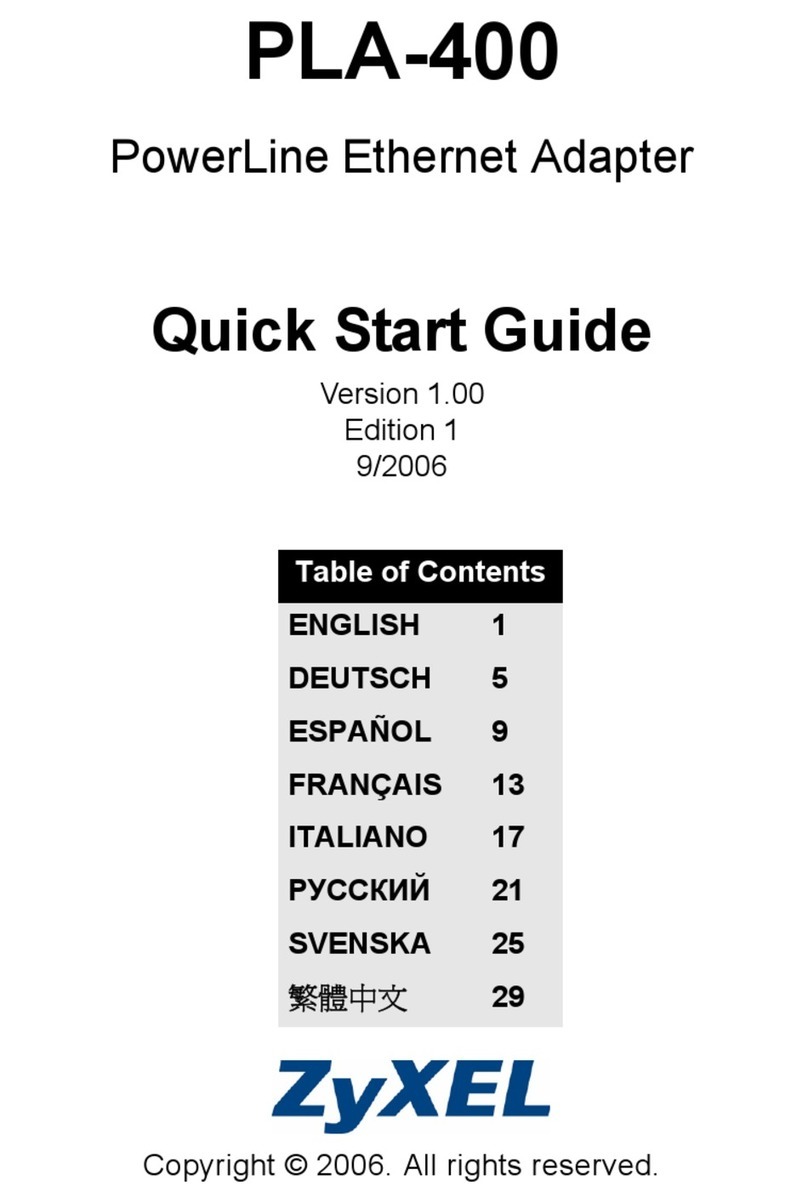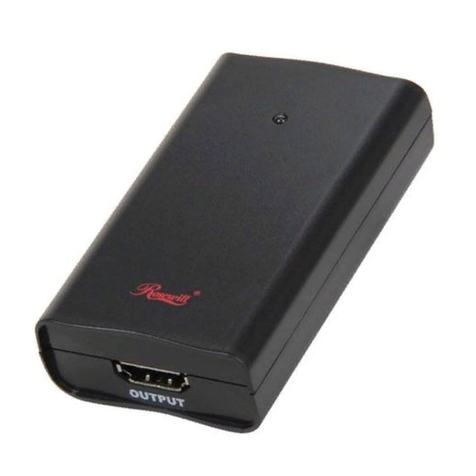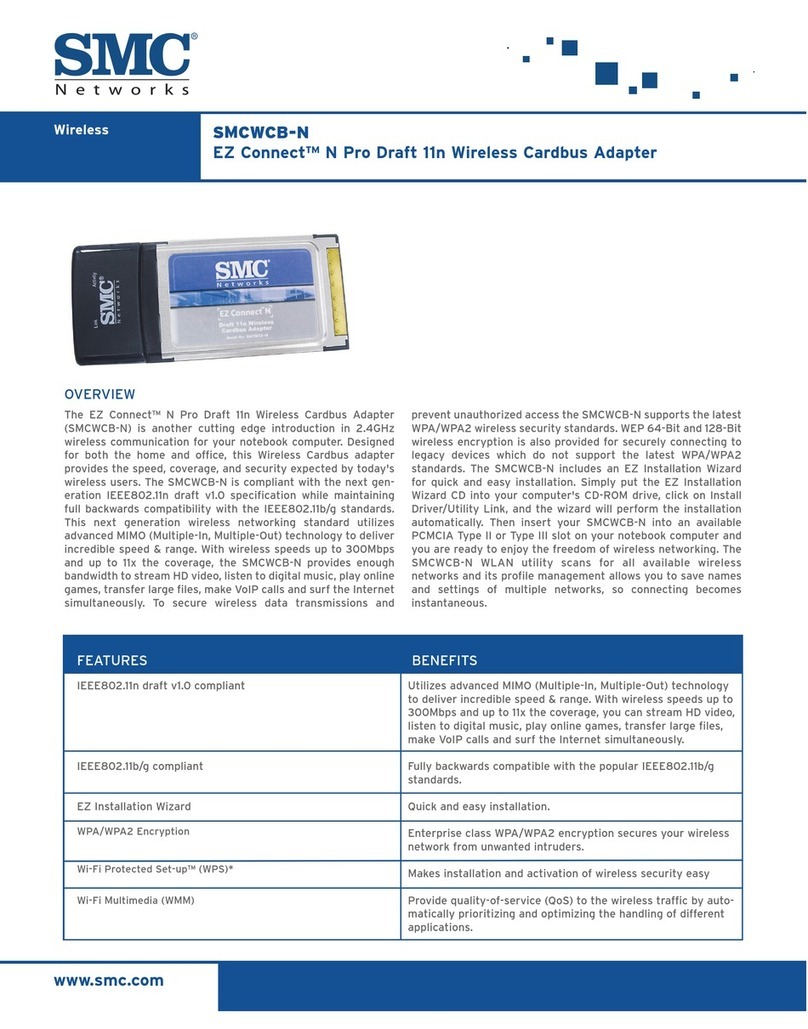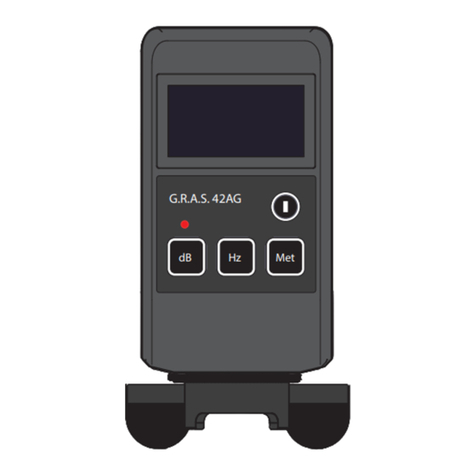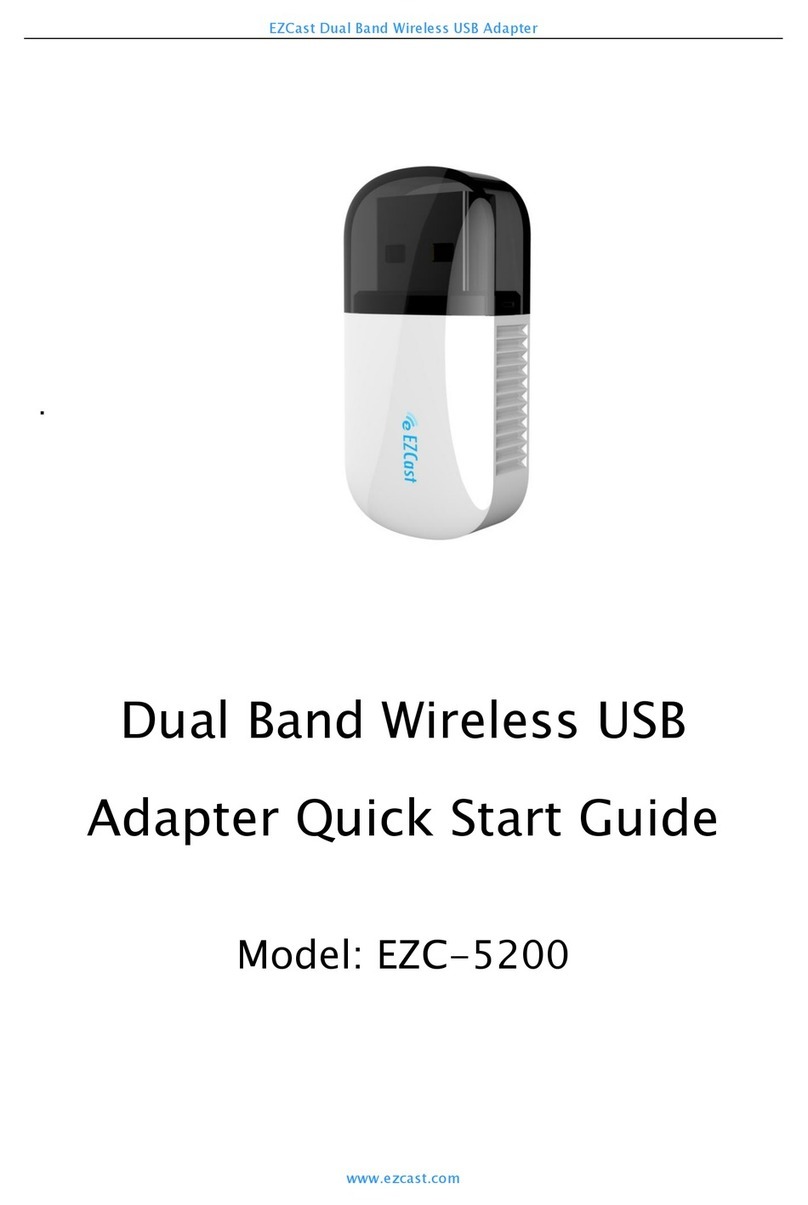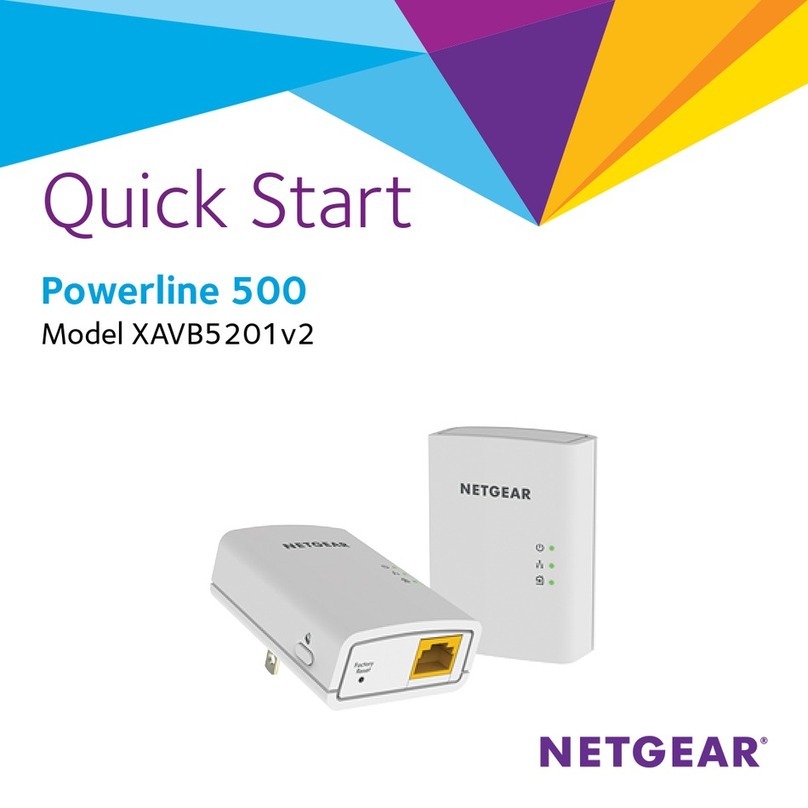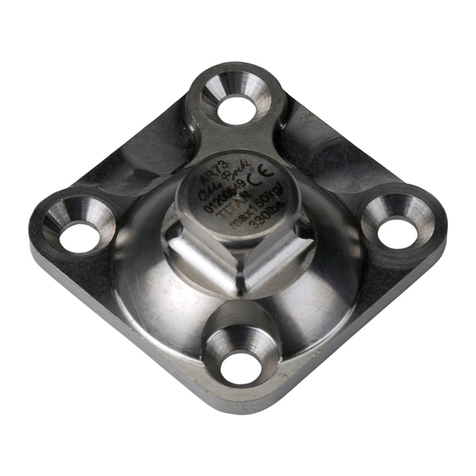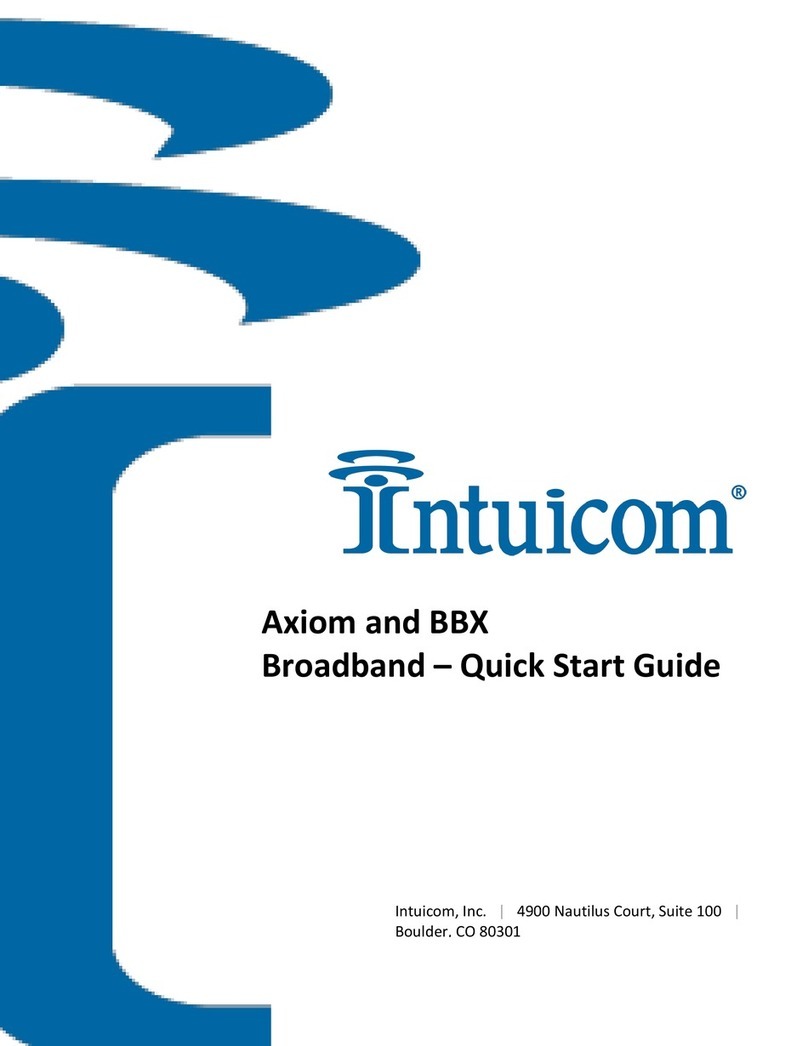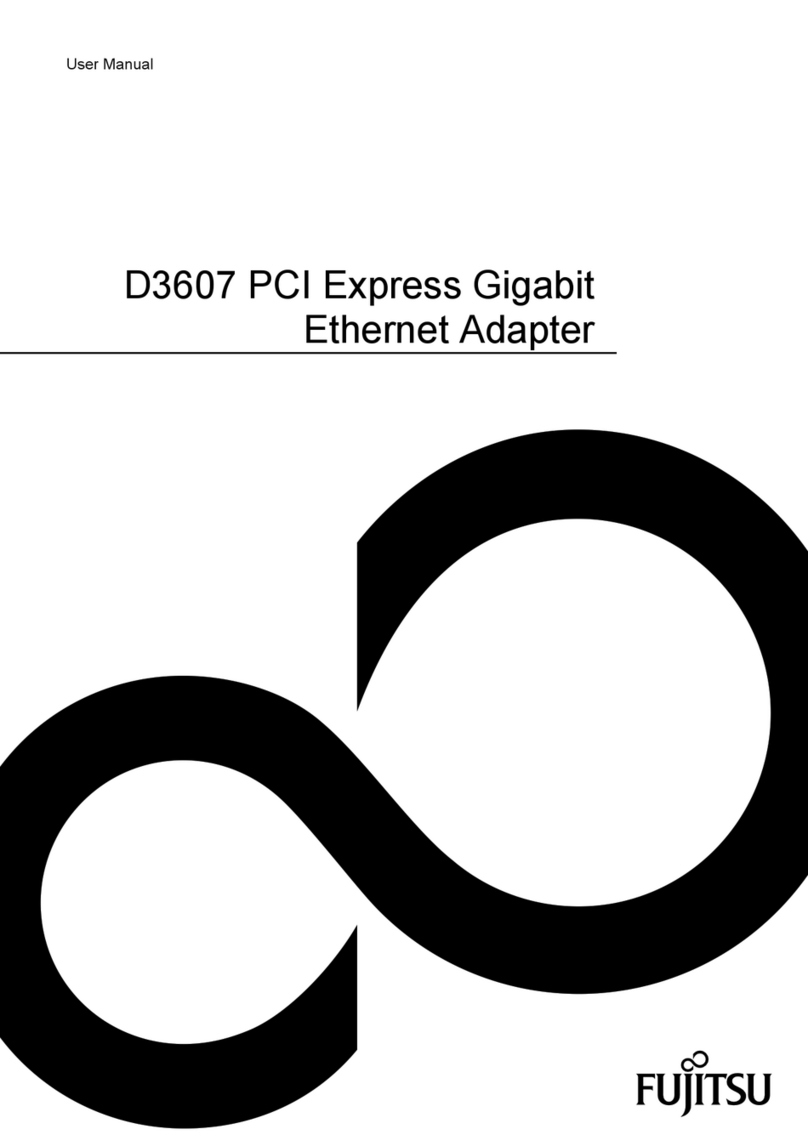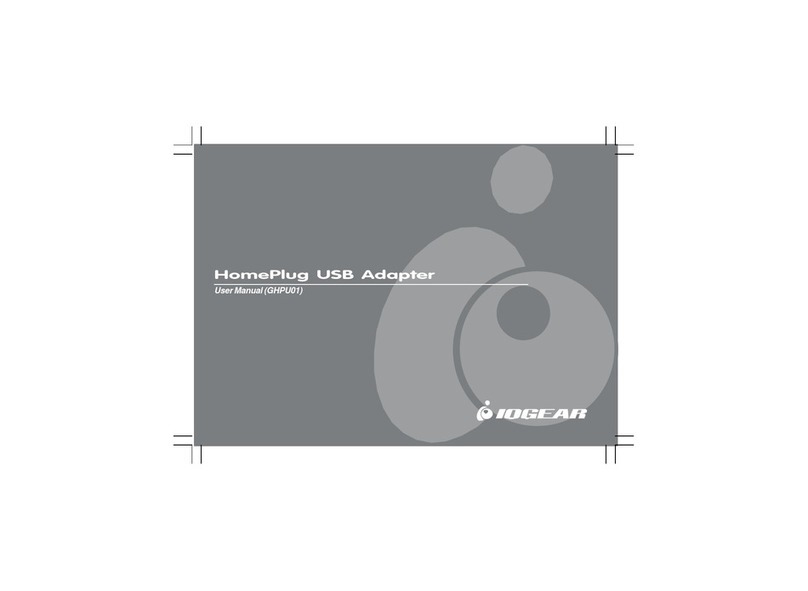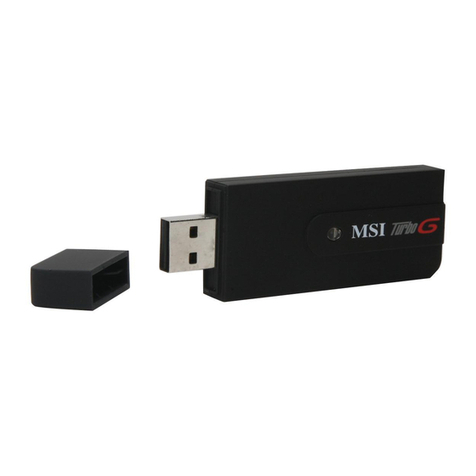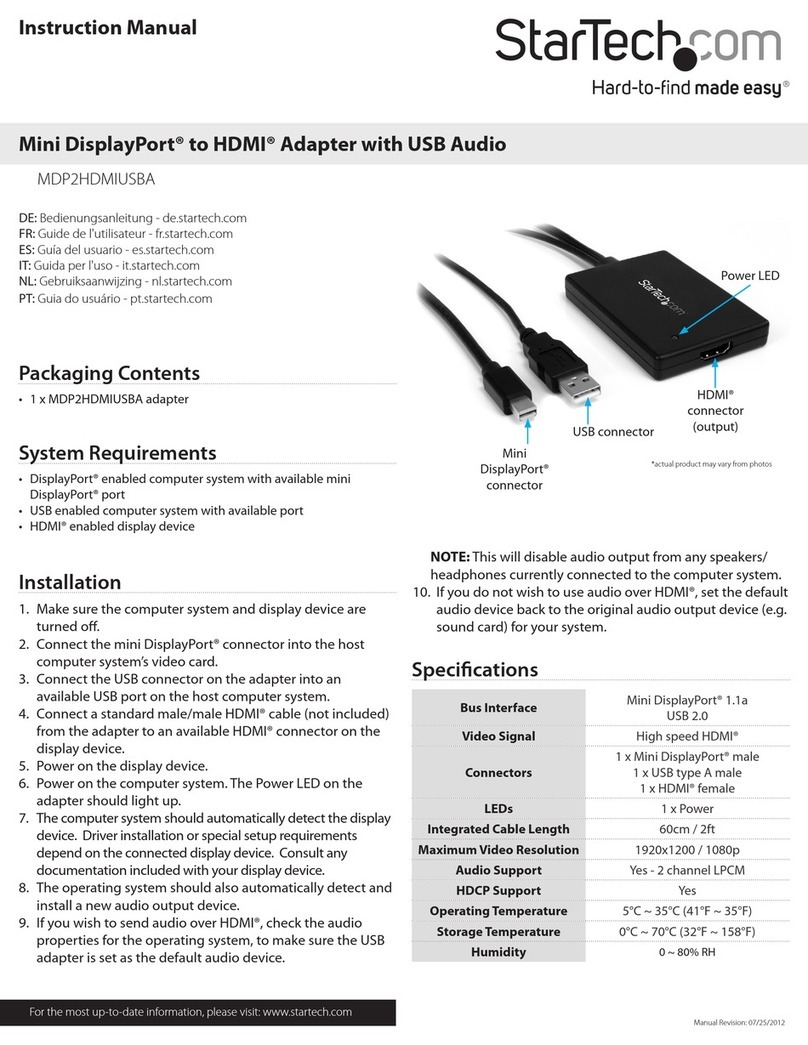Delsys TRIGNO User manual

TRIGNOTM EMG System
Copyright © Delsys Incorporated
Delsys Logo and EMGworks are
Registered Trademarks of Delsys Inc.
MAN-019-1-3
4-Channel FSR Adapter User’s Guide


4-Channel FSR Adapter User’s Guide
Table of Contents
Important Information 4
Intended Use 4
Technical Service and Support 4
Warnings and Precauons 5
Device Informaon 6
Disclaimer 8
System Requirements 8
FSR Sensor Overview 9
Using the Sensors 10
Charging the Sensors 10
Sensor Pairing 11
Smart Sensors 12
Working with the FSR Membranes 13
Handling FSR Membranes 13
Connecng the FSR Membranes to the Sensor 13
Applying the FSR Membrane 14
Placing the FSR Sensor 16
Connecng the FSR Sensor Analog Outputs 17
Specications 18

4-Channel FSR Adapter User’s Guide4
Important Information
Intended Use
e TrignoTM Wireless EMG Systems are battery-powered biofeed-
back devices that enable researchers and clinicians to acquire EMG
and related signals from subjects for biofeedback purposes. ey are
intended for relaxation training and muscle reeducation. Interpreta-
tion of the EMG and supporting signals by a qualied individual is
required.
Rx ONLY
DO NOT USE on Patients with implanted electronic devices of any
kind, including cardiac pace-makers or similar assistive devices, elec-
tronic infusion pumps, and implanted stimulators.
DO NOT USE on irritated skin or open wounds.
DO NOT USE on Patients with allergies to Silver.
DO NOT USE in critical care applications.
Technical Service and Support
For information and assistance visit our web site at:
www.delsys.com
Contact us at:
telephone: (508)-545-8200
email: [email protected]

5TrignoTM EMG System
Warnings and Precautions
Consult all accompanying documents for precautionary statements
and other important information.
Consult accompanying user’s guide for detailed instructions.
Keep the device dry. e device is not waterproof and should not be
submerged under any circumstance. e ingress of liquids may com-
promise the safety features of the device. e device is not intended
for use under high sweat conditions. Situations which may result in
the entrapment of sweat around the sensors must be avoided.
Handle with care. Trigno sensors and instruments are precision de-
vices and not designed for excessively rugged use. Carefully inspect
devices prior to each use to ensure that no mechanical deterioration
has occurred.
Sensitive electronic device. Avoid static discharges. Do not operate
or store near strong electrostatic, electromagnetic, magnetic or ra-
dioactive elds. Interference from external sources may decrease the
signal-to-noise ratio or result in corrupted data.
Connect only to Delsys-approved devices.
Connecting a patient to high-frequency surgical equipment while
using Delsys EMG systems may result in burns at the site of the
EMG sensor contacts.
Immediately discontinue device use if skin irritation or discomfort
occurs.
Immediately discontinue device use if a change in the device’s per-
formance is noted. Contact Delsys technical support for assistance.
Delsys Inc. guarantees the safety, reliability, and performance of the
equipment only if assembly, modications and repairs are carried
out by authorized technicians; the electrical installation complies
with the appropriate requirements; and the equipment is used in ac-
cordance with the instructions for use.
Device contains a Lithium-Polymer battery. Do not damage, crush,

4-Channel FSR Adapter User’s Guide6
burn, freeze, heat or otherwise mishandle the device. Recharge only
with the approved power supply and recharger. Sensors should be
charged regularly to extend the battery life. Extended periods in the
discharged state may damage the internal lithium polymer cell.
Trigno Systems should be stored and operated between 5 and 40
degrees Celsius due to the presence of an internal Lithium Polymer
rechargeable cell. Storing or operating the device, and consequently
the cell, outside of this temperature range may compromise the in-
tegrity and the safety features of the cell.
Device Information
Complies with Requirements put forth by the Medical Device Di-
rective 93/42/EEC. Class I device, Annex VII.
Type BF device (IEC 60601-1).
Isolated device, (Class II, IEC 60601-1)
Do not dispose this product with house waste. Contact Delsys Inc.
for instructions on responsibly disposing this device. is product
should not be mixed with other commercial wastes.
Date of Manufacturing (appears on device)
Serial Number (appears on device)
EMERGO EUROPE
Prinsessegracht 20
2514 AP The Hague
The Netherlands
Authorized Representative Manufacturer
DELSYS INC.
23 Strathmore Rd.
Natick MA 01760
USA

7TrignoTM EMG System
FCC ID: W4P-SP-W03 (Trigno Body Worn Receiver)
FCC ID: W4P-SP-W01 (Trigno Sensor)
FCC ID: W4P-SP-W05 (Trigno Sensor)
IC: 8138A-DST02 (Trigno Personal Monitor System)
is device complies with Part 15 of the FCC Rules and Industry
Canada’s RSS-210 License Exempt Standards. Operation is sub-
ject to the following two conditions: (1) is device may not cause
harmful interference, and (2) this device must accept any interfer-
ence received, including interference that may cause undesired op-
eration.
is product complies with FCC OET Bulletin 65 radiation expo-
sure limits set forth for an uncontrolled environment.
Pursuant to Part 15.21 of the FCC Rules, any changes or modica-
tions to this product not expressly approved by Delsys Inc. might
cause harmful interference and void the FCC authorization to op-
erate this product.
To reduce potential radio interference to other users, the antenna
type and its gain should be so chosen that the equivalent isotropi-
cally radiated power (EIRP) is not more than that required for suc-
cessful communication.
is equipment has been tested and found to comply with the limits
for a Class B digital device, pursuant to Part 15 of the FCC Rules.
ese limits are designed to provide reasonable protection against
harmful interference in a residential installation. is equipment
generates, uses, and can radiate radio frequency energy and, if not
installed and used in accordance with the instructions, may cause
harmful interference to radio communications. ere is no guaran-
tee that interference,will not occur in a particular installation. If this
equipment does cause harmful interference to radio or television
reception, which can be determined by turning the equipment o
and on, the user is encouraged to try to correct the interference by
one or more of the following measures:
• Reorient or relocate the receiving antenna.
• Increase the separation between the equipment and receiver.
• Connect the equipment into outlet on a separate circuit.

4-Channel FSR Adapter User’s Guide8
Disclaimer
DELSYS INC. makes no warranties, express or implied, as to the
quality and performance of this product including but not limited
to, any implied warranty of applicability for other than research
uses by qualied individuals. DELSYS INC. shall not be liable to
any person for any medical expenses or any direct or consequential
damages resulting from any defect, failure or malfunction, whether
a claim for such damages is based upon theory of warranty, contract,
tort or otherwise. No representative, agent, or licensed practitioner
is authorized to waive this disclaimer. DELSYS INC. makes no di-
agnosis or prescription by virtue of anything about this product.
System Requirements
e Trigno 4-channel FSR Sensor is designed to be used with the
Trigno Wireless EMG System.

9TrignoTM EMG System
e Trigno 4-channel FSR (Force Sensitive Resistor) Sensor is an ac-
cessory to the Trigno EMG System designed to provide relative pres-
sure information of body-contact surfaces, such as the heel, the toe
and the ngers. Each sensor transmits 4 independent analog signals,
each servicing an individual FSR membrane. ree FSR membrane
sizes are available for optimizing performance in varieties of scenarios.
One 4-channel FSR Sensor occupies one position of the 16 possible
sensors in a Trigno network. Data are expressed as a percentage of the
sensor’s full scale limits. ese devices are useful for identifying the
timing of signicant events and for making relative amplitude com-
parisons, but are not suitable for making absolute measurements of
force or pressure.
Figure 1. 4-Channel FSR Sensor for Trigno EMG Systems.
40 mm2
15 mm2
5 mm2
Figure 2. FSR membrane opons at 5 mm2, 15 mm2and
40 mm2 surface area.
FSR Sensor Overview

4-Channel FSR Adapter User’s Guide10
Charging the Sensors
Connect the Trigno power supply to the circular DC jack located
on the side of the Trigno Base/Recharge Station. Energize the power
supply by connecting it to a Mains outlet. Be sure to use the appropri-
ate plug adapter for your location. Ensure that the Trigno sensors are
properly tted in the recharge pockets. e sensor LEDs will illumi-
nate to amber during charging and green when charge is complete.
e recharge unit will periodically check sensors and apply a top-o
charge to ensure that the battery is kept at full capacity during ex-
tended periods of storage, as long as power is connected.
Figure 3. Connecng the SC-P05 power supply to the Sensor
Charge Staon.
Using the Sensors

11TrignoTM EMG System
Sensor Pairing
Trigno sensors communicate with a custom wireless protocol that
links each sensor to the active Trigno network is linking process
is known as sensor “pairing”, and is initiated through the “Pair” com-
mand in EMGworks.
1. Initiate sensor pairing in soware.
When using EMGworks, initiate pairing by right-clicking the Trigno
hardware icon in the system notication area, and selecting the ap-
propriate menu item.
Figure 4. Invoking the Pair command. Right click on the Trigno
icon in the system tray (le) and select the desired channel to
pair to (right).
2. Complete the pairing process by depressing the desired sensor but-
ton for a minimum of 3 seconds. Successful pairing will result in 3
green LED ashes on the sensor, and a conrmation message in the
soware.
Figure 5. Pushing the sensor buon to complete the pairing
task.
Trigno systems are shipped with all sensors appropriately paired. Sen-

4-Channel FSR Adapter User’s Guide12
sor pairing is typically needed in the following situations: a) if sensors
are being replaced within the network group, b) when the communi-
cation frequency sets are changed, and c) aer a rmware upgrade is
performed.
Upon pairing sensors, EMGworks will present the option to enter a
“Delsys Factory Calibration” sequence or to use the “Auto-Detected
Calibration”. Select the “Auto-Detected Calibration” option unless
the sensor is specically supplied with a calibration key (this is not
common).
Figure 6: The calibraon can be auto-detected, or entered manu-
ally if the sensor is being paired for the rst me.
Smart Sensors
Aer pairing, the association of sensors to the Trigno System is re-
tained for all future uses. Any conguration in EMGworks can be
made to reect the last paired set of sensors by clicking the “Refresh
Smart Sensors” button in the “Add Sensors” pane in EMGworks.
When data collection starts, the soware will verify that the sensors
currently communicating match those used in the conguration. If
there is a mismatch, cancel the recording and repair the sensors.
e 4-channel FSR Sensors will appear with a unique icon shown be-
low in EMGworks once it has been properly paired and identied.
1
Pair
E
Figure 7. Trigno FSR Sensor
icon appearing EMGworks,
idened as a type “E” device.
(Note that the icon may appear
dierent than shown.
Please refer the Trigno EMG System User Guide for further details
on system and sensor operation.

13TrignoTM EMG System
Working with the FSR Membranes
Handling FSR Membranes
e FSR membranes are delicate transducers constructed in multiple
layers that have an ability to change resistance as pressure is applied.
Delsys supplies these membranes with a 30 cm cable extension, ter-
minated with a shrouded barrel connector for mating with the wire-
less sensor. Care must be exercised when using these membranes as
excessive forces will damage them. ese are particularly vulnerable
to shear forces, such as those encountered during walking or running,
which may cause the membrane to delaminate. It is recommended
to place the membrane in a protected location where its exposure to
these forces is limited. Alternatively, the FSR membrane can be pro-
tected by layering it between two pieces of clear vinyl packaging tape.
In this case, care must be taken to ensure that the air channel at the
membrane edge is not occluded and remains clear.
FSR membrane
air channel
Figure 8. The FSR membrane. Ensure that the air channel at the
joint of the membrane and the cable remains clear so that air
can ow during membrane compressions.
Connecting the FSR Membranes to the Sensor
e Trigno FSR Sensor has a connector head hosting 4 receptacles for
the membrane transducers. Connect the FSR membranes by to the 4
barrel receptacles taking care to fully mate the plug. e connectors
are labeled numbers 1-4 on the sensor, and portrayed in this order in
the EMGworks soware. All FSR membranes are interchangeable.

4-Channel FSR Adapter User’s Guide14
Figure 9. Mang the FSR membrane connectors to the sensor
connector head. Ensure that the barrels are fully inserted.
Applying the FSR Membrane
e FSR membranes can be used in a wide variety of circumstances
and applications; thus each case must be evaluated for any particular
challenges it may pose. One common application of this device is to
use it as footswitch during walking or running. With this example,
one can consider several options for axing the sensor to the heel, as
shown in the gures below.
Taping the sensor directly to the
heel will produce a very sensitive
and responsive signal. How-
ever this approach subjects the
FSR membrane to high load and
shear forces, which may cause
signal saturation accelerated
wear. Protecting the FSR mem-
brane with vinyl tape or similar
material is recommended to ex-
tend usage life. Figure 10. Axing the FSR
membrane directly on the
heel.
An alternative approach to axing the FSR membrane to the heel,
is to instrument the shoe by taping it to the sole. is will produce a
similar response as the previous example, but may oer some added

15TrignoTM EMG System
convenience for repetitive data trails. It is also advisable in this case
to protect the FSR membrane with vinyl tape in order to extend its
usage life.
Figure 11. Axing the FSR membrane to the top of the inner
sole.
Placing the FSR membrane on the bottom of the inner shoe sole, pro-
vides some added protection to the device, as load and shear forces are
diused between the show base and the sole. is location may also
be convenient to avoid signal saturation in cases of high loads.
Figure 12. Axing the FSR membrane to the boom of the in-
ner sole.
e examples above serve to illustrate common techniques that Re-
searchers employ when using FSR type devices. Each situation and
use-case is unique, however, so the User is encouraged to explore oth-
er strategies as needed. e 3 supported FSR membrane size can be
used in a wide range of applications which can include activities such
as sitting, walking, lying down, jumping, ngertip contact and many
others.
Figure 13. FSR membrane opons for variees of applica-
ons servicing 5 mm2, 15 mm2and 40 mm2areas.

4-Channel FSR Adapter User’s Guide16
Since each FSR sensor can support up to 4 channels, it is possible to
observe 4 pressure points with 1 sensor. Continuing with the previous
example of monitoring footstrike at the heel, one could add 3 addi-
tional monitoring points to the 1st metatarsal, the 5th metatarsal and
the toe, resulting in well-characterized contact point map of the foot.
D
B
A
C
A-toe
B- 1st metatarsal
D- heel
C- 5th metatarsal
% FS
0
100
0123
% FS
0
100
time (s)
% FS
0
100
% FS
0
100
B- 1st metatarsal
A-toe
C- 5th metatarsal
D- heel
time (s)
0 0.5
% FS
0
100
% FS
0
100
% FS
0
100
% FS
0
100
Figure 14. Mapping 4 pressure points of the foot. Le panel
shows the locaon of the 4 pressure points being monitored.
Middle panel shows data from these during low intensity run-
ning on a treadmill as acquired by EMGworks. Right panel ex-
pands the me scale for 1 footstrike, showing the me-course
and relave intensity of each pressure point.
Placing the FSR Sensor
e Trigno FSR Sensor and the associ-
ated connection head can be easily af-
xed to the surface of the body using
the Delsys Adhesive interfaces. e
connector head is easily serviced by
cutting a full-size interface in half. Ad-
ditional self-adhesive wraps or tapes
can be used to further secure the sensor
on the body.
Figure 15. Placing the
FSR Sensor on the body.

17TrignoTM EMG System
Connecting the FSR Sensor Analog Outputs
When paired to a Trigno EMG System, the 4-channel FSR Sensor
eectively replaces the EMG channel and 3 accelerometer channels
(X, Y and Z) of the standard EMG sensor originally associated with
those positions. As such, analog outputs of these channels will output
the FSR analog signals. Note that FSR 1 takes the position of the
EMG signals and thus sampled at 1926 samples/sec with a resolu-
tion depth of 16 bits. Remaining connectors FSR 2, 3 and 4 occupy
the accelerometer channel positions of X, Y and Z respectively and
are thus sampled at 148 samples/sec to a resolution depth of 10 bits.
Please refer the Trigno EMG System Manual for further details on
the analog output connections.

4-Channel FSR Adapter User’s Guide18
Specications
Typical Operating Range(1) 20 m
RF Frequency Band 2400-2483 MHz (ISM band)
Power Consumption <65 mW
Effective Radiated Power 9 mW
RF Protocol Proprietary
Case Dimension (main sensor) 27 x 37 x 15 mm
Full-charge Operation Time(2) 8 hours (typical)
Recharge Time(3) <2.5 hours
Auto Shut-down timer 300 seconds
Temperature Range(4) 5 - 50 degrees Celsius
FSR resistance range(5) 180 - 30000 ohms
Bandwidth DC-50 Hz ± 5 Hz, 20 dB/dec
Channel 1 Sampling Rate 1926 samples/sec
Channels 2-4 Sampling Rate 148 samples/sec
Channel 1 Resolution Depth 16 bits
Channels 2-4 Resolution Depth 10 bits
Analog Output Range (6) -4.85 V to 5.00 V
(1) Range is characterized in open ofce environments. Interfering RF sources in the
2.4 GHz spectrum, as well as absorptive objects occluding the RF communication path
may degrade transmission distance. Stated range can be exceeded under favorable RF
conditions.
(2) Battery duration is a function of charge and discharge conditions. Optimal battery per-
formance is obtained when the device is operated at room temperature. Note that the
stated Operation Time reects the expected performance of a fully charged new battery
used in a sensor that is transmitting data. Operation Time is expected to decrease as a
function of charge cycles, and when the sensor is searching for a network.
(3) 80% of original battery capacity is maintained after 300 discharge/recharge cycles or
after 2 years if recharge cycles are less than 300. These values represent typical ex-
pectations under normal conditions. Actual performance will vary depending on usage
conditions.
(4) Operation beyond these temperature limits may damage the rechargeable battery.
(5) The resistance range is characterized by the full scale ability of the sensor output the
minimum signal above 50 mV and the maximum at 3.30V. FSR membranes operated
within these bounds, but not necessarily at the full range limits.
(6) The analog output signal is scaled to full range of the FSR sensor, where an output of 0%
in EMGworks corresponds to the most negative output of -4.85V and a full scale output
of 100% corresponds to +5.00V. Refer to the Trigno EMG System User’s Guide for ad-
ditional details on the analog output specications.
Other manuals for TRIGNO
5
Table of contents
Other Delsys Adapter manuals
Popular Adapter manuals by other brands
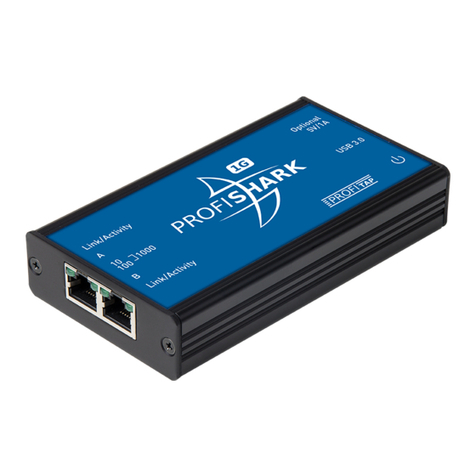
ProfiTap
ProfiTap PROFISHARK 1G user manual
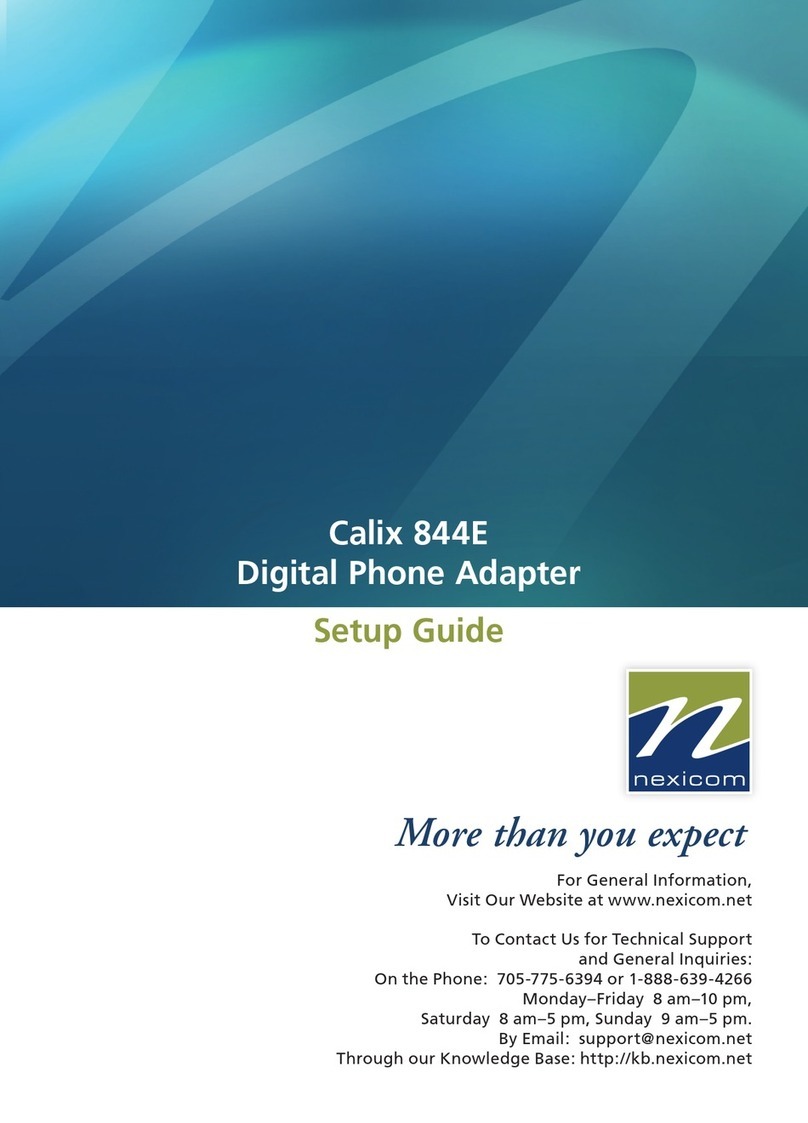
NEXICOM
NEXICOM Calix 844E Setup guide
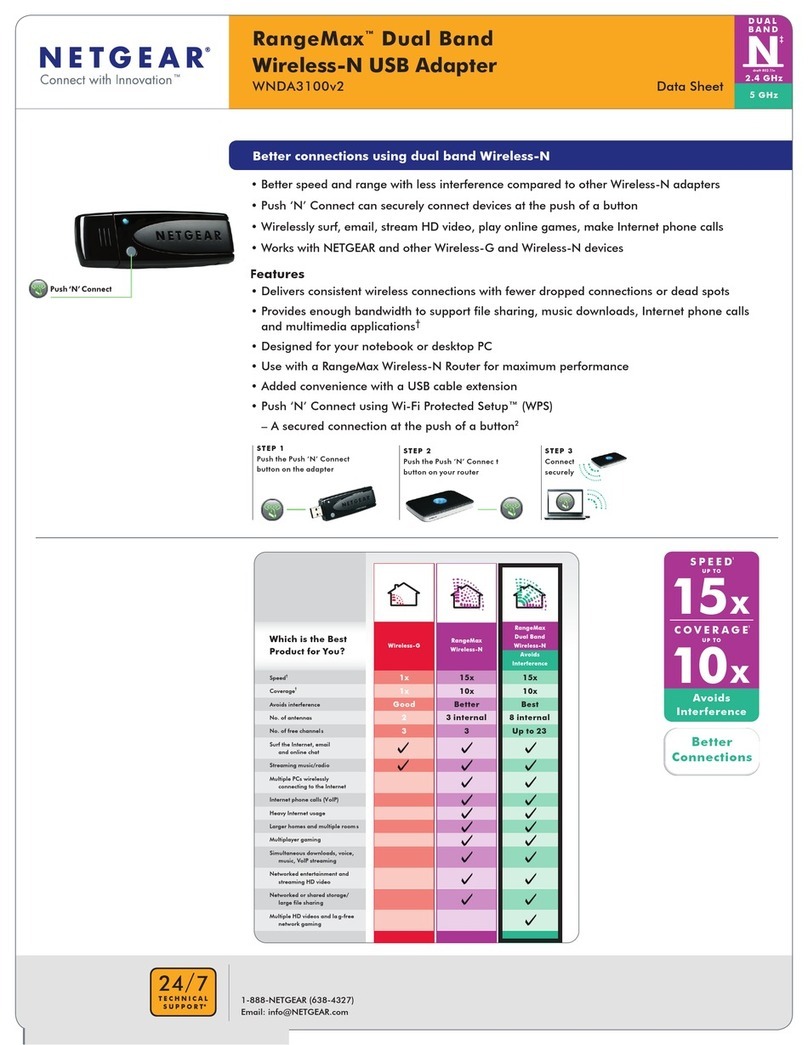
NETGEAR
NETGEAR WNDA3100v2 - RangeMax Dual Band Wireless-N USB 2.0... Product data

Schwaiger
Schwaiger LADV2025 operating instructions
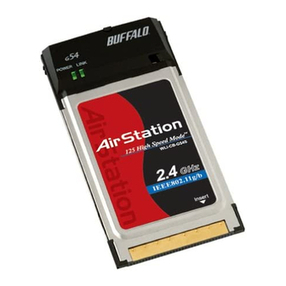
Buffalo
Buffalo AirStation WLI-CB-G54S Quick setup guide
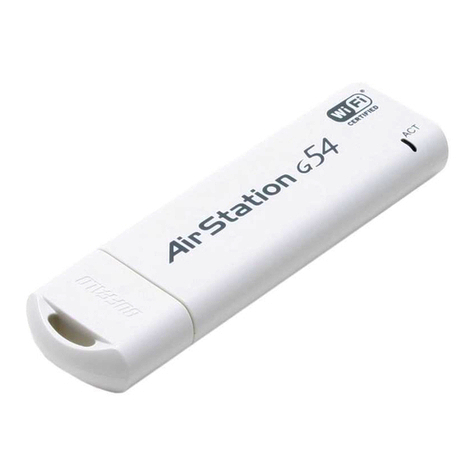
Buffalo
Buffalo WLI-U2-KG54-AI Specifications

